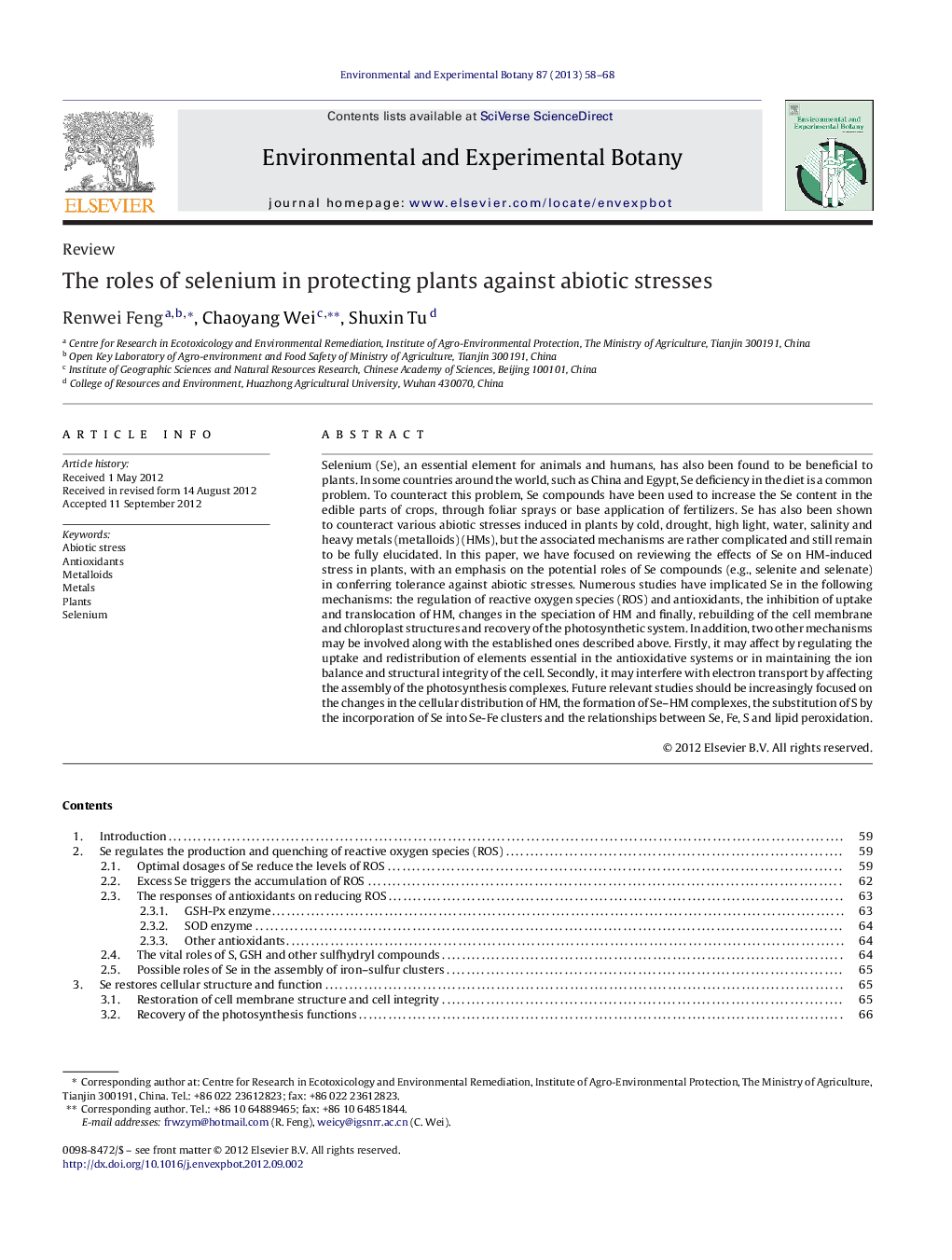| Article ID | Journal | Published Year | Pages | File Type |
|---|---|---|---|---|
| 4554577 | Environmental and Experimental Botany | 2013 | 11 Pages |
Selenium (Se), an essential element for animals and humans, has also been found to be beneficial to plants. In some countries around the world, such as China and Egypt, Se deficiency in the diet is a common problem. To counteract this problem, Se compounds have been used to increase the Se content in the edible parts of crops, through foliar sprays or base application of fertilizers. Se has also been shown to counteract various abiotic stresses induced in plants by cold, drought, high light, water, salinity and heavy metals (metalloids) (HMs), but the associated mechanisms are rather complicated and still remain to be fully elucidated. In this paper, we have focused on reviewing the effects of Se on HM-induced stress in plants, with an emphasis on the potential roles of Se compounds (e.g., selenite and selenate) in conferring tolerance against abiotic stresses. Numerous studies have implicated Se in the following mechanisms: the regulation of reactive oxygen species (ROS) and antioxidants, the inhibition of uptake and translocation of HM, changes in the speciation of HM and finally, rebuilding of the cell membrane and chloroplast structures and recovery of the photosynthetic system. In addition, two other mechanisms may be involved along with the established ones described above. Firstly, it may affect by regulating the uptake and redistribution of elements essential in the antioxidative systems or in maintaining the ion balance and structural integrity of the cell. Secondly, it may interfere with electron transport by affecting the assembly of the photosynthesis complexes. Future relevant studies should be increasingly focused on the changes in the cellular distribution of HM, the formation of Se–HM complexes, the substitution of S by the incorporation of Se into Se-Fe clusters and the relationships between Se, Fe, S and lipid peroxidation.
► Selenium can be used to counteract environmental stresses in plants. ► Selenium regulates the uptake of elements and antioxidant activities in stressed plants. ► Selenium may regulate or repair the damaged photosynthetical system to rebalance the electron transfer.
